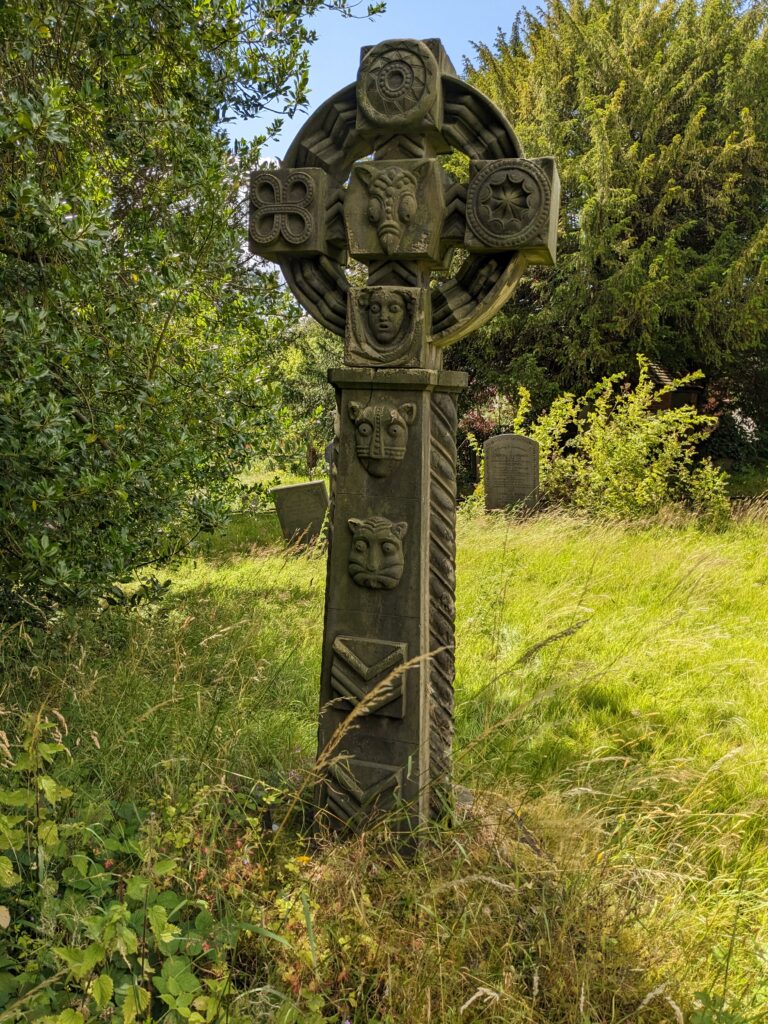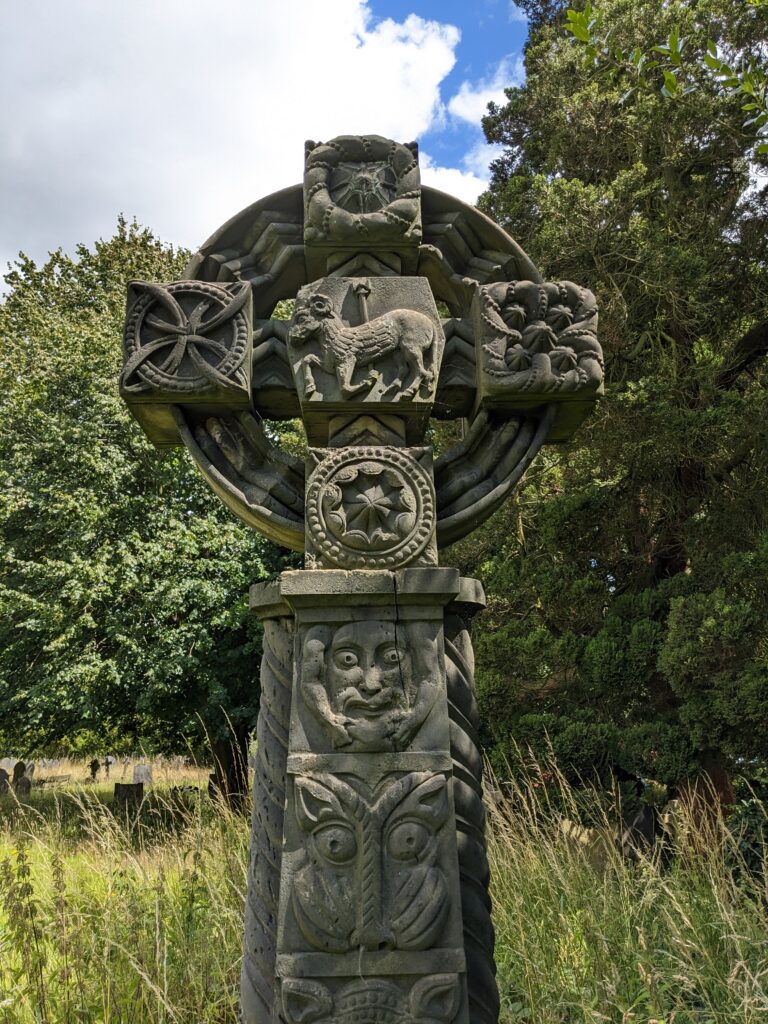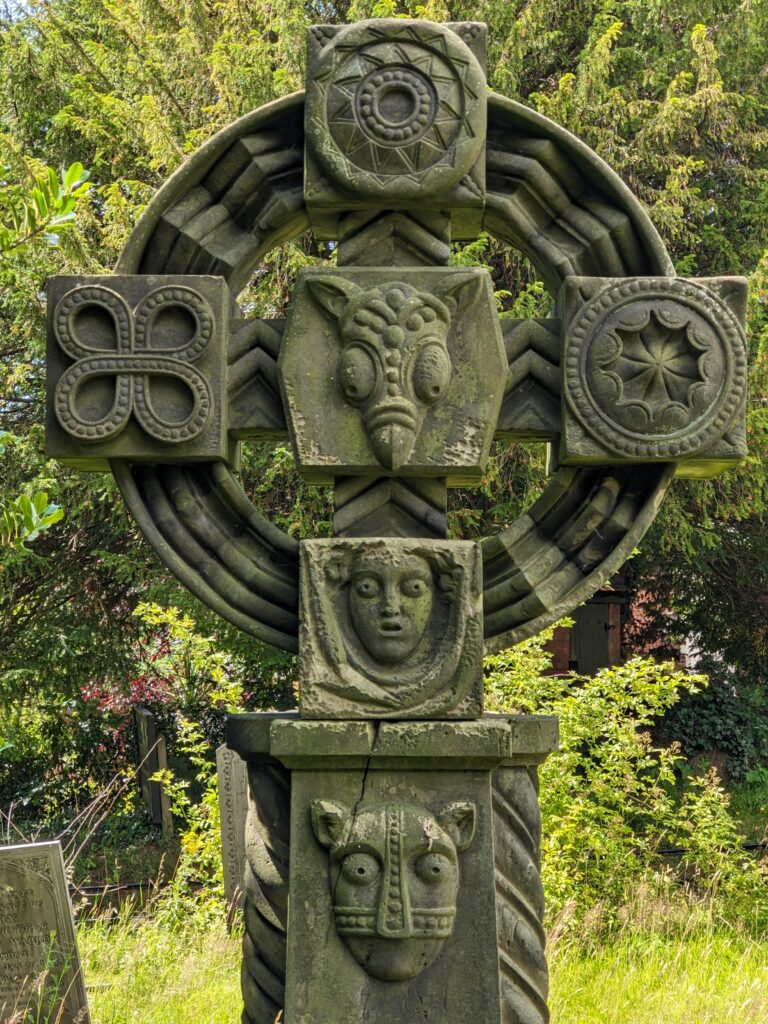

According to the British Listed Buildings website this cross has a hexagonal base of three steps although as the photos above show the steps are now almost completely overgrown. It stands in the churchyard on the right as you walk up the steps to the church door, about 15 yards away from the door. The picture below, from the May Grimley Collection, shows it before the wall around the churchyard was built, standing next to the Spode graves.

The cross is at least the third associated with the church. When Stebbing Shaw wrote his Histories and Antiquities of Staffordshire in the 1790s he stated that there the pedestal of a stone cross remained in the churchyard. When the church was almost completely rebuilt in 1845 a new cross made using parts of the original engravings which surrounded the doorway. It didn’t fare well as this extract from a letter to The Building News in December 1871 shows:
An equally objectionable case of mutilation came under my observation a short time ago; in this instance in connection with an ecclesiastical building. The parish church of Armitage, in Staffordshire, has recently been rebuilt [although it was rebuilt 25 years before this letter]. Here was a fine Norman south doorway, the ornaments of which were extremely grotesque and singular. Instead of retaining the old doorway as such, they have imitated it, and some of the stones belonging to it have been stuck onto an iron framework as a churchyard cross; the swelling of the metal by corrosion has done more damage to the carved work in a year or two than the weather and neglect in their old position did in six or seven centuries, and when I saw them they had all toppled over together, and were spilt in all directions.


The current cross was commissioned by Josiah Spode in the mid – late 1800s and is apparently a copy of the previous cross but using stone throughout. Looking at this cross you can see what the engravings were originally like around the entrance to the church. The striking feature of the grotesquely carved figures are the prominent eyes and they are the same as the ones on the font with is dated to the early 1100s.
